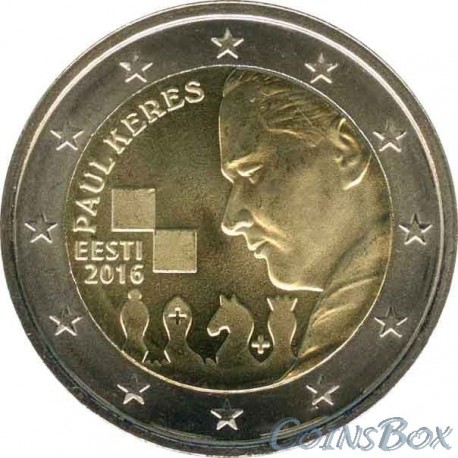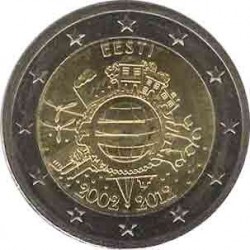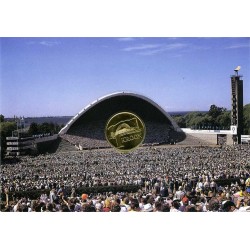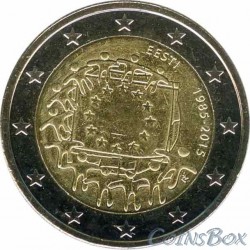No products
Product successfully added to your shopping cart
There are 0 items in your cart. There is 1 item in your cart.
Estonia
- Sets of coins
-
Coins
- Coins Russia and CIS
-
Europe
- EURO
- Austria
- England
- Belgium
- Germany
- Italy
- Spain
- Latvia
- Lithuania
- Estonia
- Luxembourg
- Portugal
- France
- Finland
- Cyprus
- Andorra
- Greece
- Netherlands
- Slovakia
- Slovenia
- Ukraine
- Belarus
- Sweden
- Poland
- Norway
- Denmark
- Ireland
- Iceland
- Switzerland
- Monaco
- Liechtenstein
- Bulgaria
- Hungary
- Moldova
- Romania
- Czech
- Vatican
- Albania
- Bosnia and Herzegovina
- Macedonia
- Malta
- San Marino
- Serbia
- Croatia
- Montenegro
- Turkey
- Kazakhstan
- Transnistria
- Scotland
- Gibraltar
- North America
- South America
- Australia and South Pacific
- Africa
- Asia
- Tokens
- Silver
- Accessories
- Sochi 2014
- Banknotes
- Sale
- Marriages and species
- Sundry
Top sellers
-

-

-

Official set of series Russian Federation. Issue 11
Official set of series "Russian Federation". Issue 11
4 650 руб -

100 RUB Sochi 2014
680 руб -

-

-

10 kopeck 2015 MMD
7 руб -

-

1 Dollar First Patent 2018
250 руб -

Official set of series Russian Federation. Issue 12
Official set of series "Russian Federation". Issue 11
5 350 руб
No supplier
Viewed products
Estonia. 2 euros. 2016. Chess player Paul Keres
Data sheet
| Depth | 2,2 |
| Weight | 8,5 |
| Diameter (mm) | 25,75 |
| Mintage | 500 |
| Material | bimetal |
| Edge of the coin (milling) | combined |
| Series | Outstanding events and people |
| Country | Estonia |
| Release date | 2016 |
| Quality | UNC |
More info
Estonia. 2 euros. 2016. Chess player Paul Keres
Obverse: The map of Europe is on the right side. Against the background of the card six vertical lines are shown. At the ends of these lines, there are 12 stars. To the left of the card has a numeric denomination. On the card is a horizontal inscription «EURO».
Reverse: in the center of the disc are shown on the inner profile of Paul Keres and four chess pieces. On the left of the picture two chess cells and signs posted: "Paul Keres", "Eesti", "2016".
January 7, 2016 Ectoniya released the first independent (not part of the pan-European series) commemorative coin 2 Euro to commemorate the 100th anniversary of the birth of chess Paul Keres. Keres is not the first time represented in the Estonian money - before his portrait was decorated 5-chron banknote.
In the hometown of GM Narva was a monument to Keres.
One of the strongest players in the world 1930-1960-ies Paul P. Keres (est. Paul Keres) was born in Narva, January 7, 1916 in a family of tailors Peeter Keres. In 1922 the family moved to the city of Pärnu.
In December 1928, 13-year-old Paul first tried his hand at "adult" level. Pärnu held city championship chess lightning. In it Keres won all eight parties, and about the young talent in a short note mentioned a local newspaper «Pärnu Päevaleht». After this contest was followed by other urban championships and national level.
In Estonia, the championship 1934/1935 shared first place with Gunnar Friedemann and won additional match (2: 1). This success did Keres new leader of the national chess and he was entrusted with a place in the national team at the Chess Olympiad 1935 in Warsaw.
Successful game Keres allowed Estonia to take 11th place at the Olympic Games in 1935 in Warsaw. After these competitions Keres was invited to international tournaments.
In 1948 he received the title of master of sports of the USSR. In 1950 - International Grandmaster. In 1957 he became an international referee of chess composition, and in 1974 - international chess arbiter. Four times in a row was second place in the candidates tournament (1953, 1956, 1959, 1962), on the verge of stopping the match for the world chess champion, has been dubbed the "eternal second". Five-time champion of Estonia (1935, 1942, 1943, 1945, 1953), three-time champion of the USSR (1947, 1950, 1951). In the national team of the Soviet Union seven times won the Chess Olympiad and three - team championship of Europe. He was awarded the Order of Red Banner of Labor (1957).
May 31, 1975 Keres flew to Helsinki from Vancouver, which won the international tournament. The next day, GM had to go to the ship to Tallinn. But at the athlete became ill, and he was hospitalized in the Helsinki University Hospital. Doctors diagnosed a heart attack. The next day, the chess player lighter, visited him in the House of Chess Finnish activist Simo Nuotio. Keres advised to stay in hospital for another two weeks, so the wife is not in a hurry to come to see him. He died a few days later - June 5, 1975, in 59 years of age.












